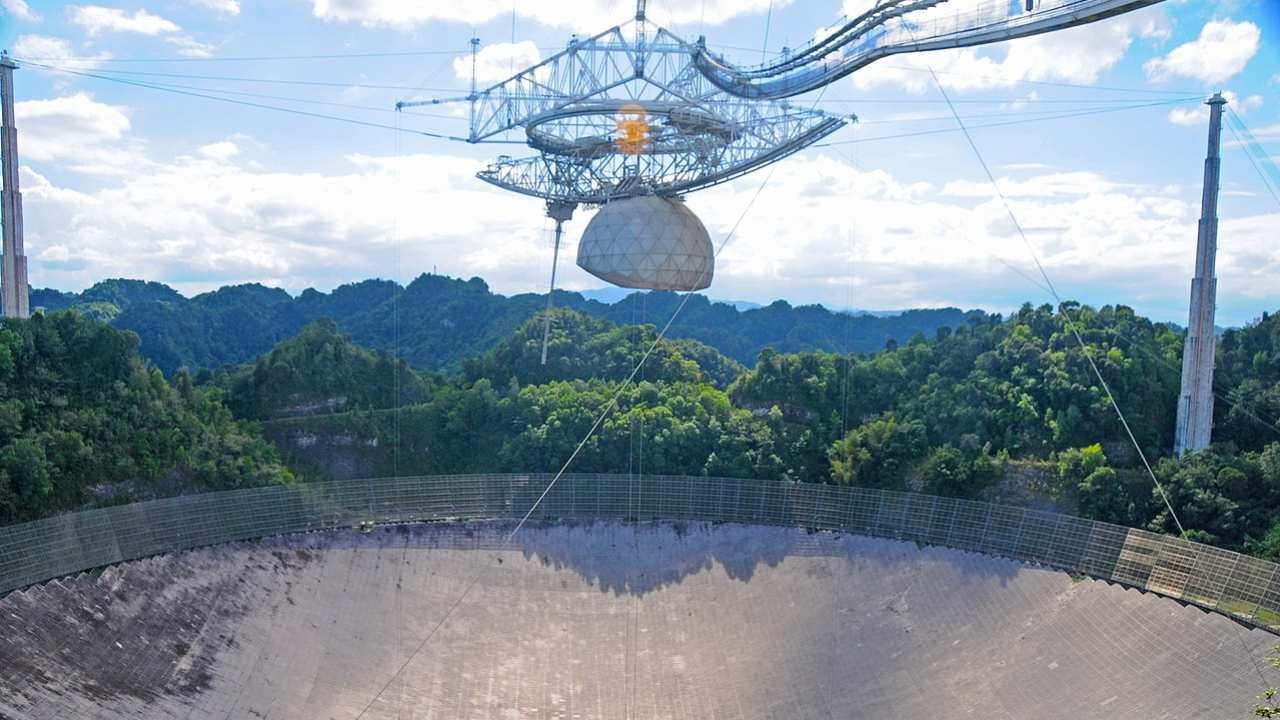

In 2013, for example, the observatory watched the arrival of asteroid 2012 DA14, which passed within 17,200 miles (27,000 kilometers) of Earth. (To be sure, there are no immediate threats, but scientists keep searching just in case.) The observatory focused on those that could pose a danger to the planet, making an effort to accurately measure their sizes and gauge the potential impact they could have. (Image credit: wikipedia, CC BY-SA) Tracking asteroids, exoplanetsĪrecibo was frequently used for finding asteroids that swung close to Earth. Key discoveriesįrank Drake, an astronomer famous for his work at Arecibo. That dish - the size of 30 football fields - is 1,650 feet (503 m) wide. The platform held the azimuth arm, a dome containing two subreflectors, and a set of antennae that could be tuned to a narrow band of frequencies.Īrecibo was the largest radio telescope until July 2016, when China finished the Five-hundred-meter Aperture Spherical Telescope's (FAST) giant dish. A triangular platform was suspended 450 feet (137 m) above the dish by three concrete towers. The reflective dish was 1,000 feet (305 meters) in diameter, 167 feet (51 m) deep, and covers an area of about 20 acres (81,000 square meters). The National Science Foundation had a cooperative agreement with the three entities that operated Arecibo: SRI International, the Universities Space Research Association and Puerto Rico's Metropolitan University (UMET).

When the telescope concluded its work, Arecibo was part of the National Astronomy and Ionosphere Center.

This image of asteroid 2015 TB145 was generated using radar data collected by the National Science Foundation's Arecibo Observatory in Puerto Rico. In these decades, NSF wrote, "Arecibo became a powerful tool for scientific research focused on ionospheric physics, radar and radio astronomy, and aeronomy." The partners brought in a new dome and a second line for ionospheric radar in 1997. NASA came on board in 1971 through a cost-sharing agreement with NSF, allowing for the dish reflector to be resurfaced and for more radar equipment to be added. The NSF agreed to become Arecibo's caretaker in 1967 and the research transferred to the civilian sector and astronomy. The Air Force-managed telescope was dedicated in 1963 and hailed as the world's largest radio telescope, but in a few short years it was already facing funding issues as ARPA's research budget diminished. Air Force (as Space Force had not been created back then.) The Advanced Research Projects Agency (today's DARPA) was interested in this region to advance ballistic missile defense projects, which meant the observatory attracted military funding from the Office of Naval Research and the U.S.

The first function of Arecibo was supposed to be studying the ionosphere, a region of the upper atmosphere that is important to understand to properly transmit radio signals, according to an NSF fact sheet. From military observatory to civilian astronomy


 0 kommentar(er)
0 kommentar(er)
